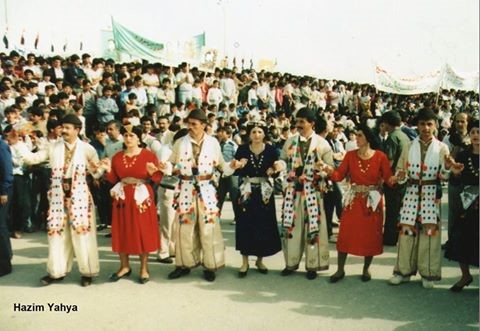[Ghamra RIFAI, Iraq Project (July 10, 2018)]
On April 10, 1969 the first Mosul Festival was inaugurated and lasted for nine days. Many floats passed through the city in a huge parade presenting various periods of the Iraqi history such as Babylon and Islamic Golden Age, in addition to floats that represented the Pan-Arab mentality of the ruling Baath party. These floats included a model of Al-Aqsa mosque and the church of the holy sepulcher in Jerusalem. The festival was not limited to the parade but it included art performances, poetry reading and exhibitions such as the Mosul flower exhibition, and it was considered a great tourist attraction.
After that, the festival took place annually for 34 years since it was first inaugurated, all through the gulf war and until the American invasion in Iraq in 2003, when it was suspended due to insurgency and deteriorated security conditions.
Some considered this festival a revival of an ancient tradition that took place in Nineveh, the capital of the Assyrians, in which the Assyrian celebrated the spring for 12 days every year. Others didn’t accept that the festival was just an innocent celebration of spring; they considered it a cultural tool that the Baath regime used to pass its agenda, keep the people under control and to manifest its vision of Iraq. But none of this stopped the people of Mosul and Iraqis from all over from celebrating their cultures, history and diversity.
In 2014 Mosul fell in the hands of the Islamic State in Iraq and Levant (ISIL or ISIS), the people of the city suffered from unbelievable oppression on the hands of ISIS and thousands of people had no choice other than fleeing their home towards other parts of Iraq or overseas to escape the terror of ISIS. To liberate Mosul from ISIS, one of the largest urban battles since World War II took place, the battle left the city in ruins. Many of the displaced went back to find their city along with their memories and possessions buried with the dead under the rubble of what used to be the second largest city in Iraq.
The degree of destruction is devastating, rebuilding the city will take long time, and will cost a lot of money and effort. However, the devastation apparently made the Mosul people more determined than ever to revive their city and its traditions.
On May 8, 2018 the wounded city celebrated the Spring Festival after 16 years of suspension following the American invasion of Iraq. People from all over Iraq poured in to be part of the huge festival.
The parade included around 38 floats representing many historical places that were destroyed by ISIS such as the “hunchback” minaret of the Great al-Nuri Mosque in Mosul that was completely destroyed. The University of Mosul also took a big part of the parade including floats of a Lamassu, an Assyrian protective deity, often depicted as having a human’s head, a body of a bull and bird’s wings, and other Assyrian symbols. A group of the university alumni of various degrees marched carrying their university flags.
People from all across Iraq came to celebrate and show their support for the people of Mosul. Mosul citizens and other Iraqis expressed their happiness to see this festival revived. For them this festival signaled a new beginning for the old city and represented their love of life and power to continue after everything that the city has been through.
Share This:
